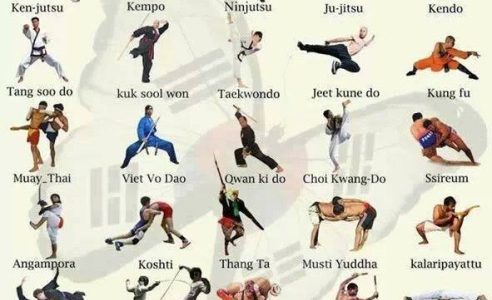The Advancement And Historic Context Of Martial Arts Worldwide
The Advancement And Historic Context Of Martial Arts Worldwide
Blog Article
Short Article Written By-Chu Fallon
Martial arts have a remarkable background that covers centuries and continents. You could find it intriguing exactly how old methods like Shuai Jiao and Kalaripayattu prepared for contemporary battle strategies. These techniques not just stress physical skills but also mirror the societies that birthed them. As you discover their advancement, consider just how globalization has actually changed these traditional forms into crossbreed styles. What influences do you think have formed today's martial arts landscape?
Ancient Martial arts: The Foundations of Combat
As you explore the world of ancient martial arts, you'll uncover the rich foundations that formed fight techniques throughout cultures. Early techniques focused on Self-Defense and survival, often incorporating strikes, hurting, and weaponry.
In ancient China, as an example, strategies like Shuai Jiao emphasized tosses and joint locks, while India's Kalaripayattu showcased agility and liquid movement. Japanese samurai developed Kenjutsu, a polished swordsmanship that highlighted technique and approach.
what are the best self defense martial arts offered not just for fight however additionally as a means of individual development, instilling worths like respect and determination. The mixing of these methods with time laid the groundwork for the varied martial arts you see today, each showing the distinct approaches and needs of its culture.
The Social Impact on Martial Arts Advancement
While martial arts commonly mirror the sensible needs of a society, they additionally symbolize the cultural values and ideas of their beginnings. When you discover different martial arts, you'll see how they're affected by religion, approach, and social standards.
For example, the focus on regard and technique in Japanese martial arts comes from Zen Buddhism and samurai society. On the other hand, Brazilian Jiu-Jitsu promotes versatility and technique, shaped by the demand for performance in a varied, modern setting.
You may locate that the routines, attires, and training techniques show a community's history and identification. By recognizing these social influences, you grow your gratitude of martial arts and their function fit human experiences around the world.
Modern Adaptations and the Globalization of Martial arts
Martial arts have actually changed substantially in current years, adjusting to modern society and international impacts. You'll notice that traditional types have combined with modern strategies, creating hybrid styles like mixed martial arts. These adjustments accommodate diverse audiences, making martial arts easily accessible and appealing around the world.
With the surge of social media sites and digital systems, you can locate tutorials and competitors from all edges of the world, breaking geographical barriers. This globalization has actually led to a common appreciation for different techniques, from Brazilian Jiu-Jitsu to Taekwondo.
As you engage with these arts, you'll understand they're not almost fight; they promote physical fitness, technique, and psychological well-being.
Eventually, contemporary adaptations have actually enriched the martial arts landscape, making it a dynamic and advancing practice.
Conclusion
In discovering the history and advancement of martial arts, you uncover a remarkable blend of techniques, societies, and ideologies. From old self-controls like Shuai Jiao and Kalaripayattu to the contemporary flexibility seen in mixed martial arts, martial arts reflect humanity's pursuit for Self-Defense and individual growth. As Suggested Web site involve with these methods, you not only get abilities however likewise a much deeper appreciation for the diverse practices that shape our globe today. So, proceed your trip and accept the art of fight!
